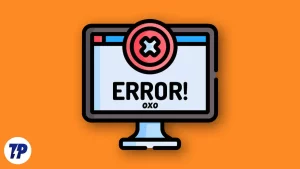If you’ve stumbled upon the warning message “Windows Error Code: 0x0 0x0” on your computer, it’s a clear indication that your system is facing some issues. This error code, often accompanied by frustration, can be attributed to incorrect or unsuccessful software installations or uninstallations, which may have left invalid entries in crucial system components. But fear not, in this comprehensive guide, we will explore how to identify, troubleshoot, and resolve this error on your Windows system. Let’s get started on the journey to a smoother, error-free computing experience.
Understanding Error Code: 0x0 0x0
Before we dive into the solutions, it’s essential to grasp the basics of this Error Code: 0x0 0x0. This code is part of the Windows Operating System’s error reporting mechanism and indicates a problem with your system’s functionality. It’s often associated with issues arising from software installations or uninstallations gone awry. The error can manifest itself in various ways, including system crashes, freezing, or the infamous “Blue Screen of Death” (BSOD). To effectively address this issue, we must first diagnose the root cause.
Common Causes of Error Code: 0x0 0x0
- Corrupted System Files: Over time, Windows system files can become corrupted, leading to this Error.
- Incomplete Software Installation: An interrupted or unsuccessful software installation can leave behind incomplete or corrupt files, triggering the error.
- Registry Errors: Invalid registry entries can disrupt system operations, causing this Error.
- Driver Problems: Outdated or incompatible device drivers can also be a source of this error.
Diagnosing the Issue
To resolve Error Code: 0x0 0x0, we need to identify the specific cause on your system. Here’s how you can diagnose the issue:
1. Check for System File Corruption
Open Command Prompt as an administrator and run the sfc /scannow command to scan and repair corrupted system files.
2. Review Recent Software Changes
Consider any software installations or updates that may have triggered the error. Roll back or uninstall recently installed software if necessary.
3. Inspect the Registry
Use the Windows Registry Editor to scan for and fix invalid entries. Be cautious when making changes to the registry, as it’s a critical system component.
4. Update Device Drivers
Ensure that all your device drivers are up-to-date. Visit the manufacturer’s website for the latest driver updates.
Resolving Error Code: 0x0 0x0
Now that you’ve identified the potential cause, let’s explore how to resolve this Error on your Windows system.
Method 1: System File Repair
To fix corrupted system files, follow these steps:
- Open Command Prompt as an administrator.
- Type sfc /scannow and press Enter.
- Wait for the scan to complete, and follow the on-screen instructions to repair any detected issues.
Method 2: Uninstall Problematic Software
If you suspect a recent software installation caused the error:
- Go to “Control Panel” > “Programs” > “Programs and Features.”
- Locate the recently installed software and select “Uninstall.”
- Follow the uninstallation wizard to remove the software completely.
Method 3: Registry Cleanup
To address registry errors, proceed with caution:
- Open the Windows Registry Editor by typing “regedit” in the Run dialog (Windows + R).
- Navigate to the key you suspect is causing the issue.
- Back up the registry key and then make necessary edits or corrections.
Method 4: Update Device Drivers
To update device drivers:
- Right-click on “This PC” and select “Manage.”
- Go to “Device Manager.”
- Right-click on the device with driver issues and select “Update driver.”
- Follow the on-screen instructions to update the driver.
Conclusion
Resolving Windows this Error may seem daunting, but with the right steps, you can get your system back on track. By understanding the common causes, diagnosing the issue, and applying the appropriate solutions, you can ensure a smoother computing experience. Remember to back up your important data before making any significant changes to your system.



